Alaska Fish & Wildlife News
October 2025
Myth Busting Alaska’s Bats
Do bats even live here?
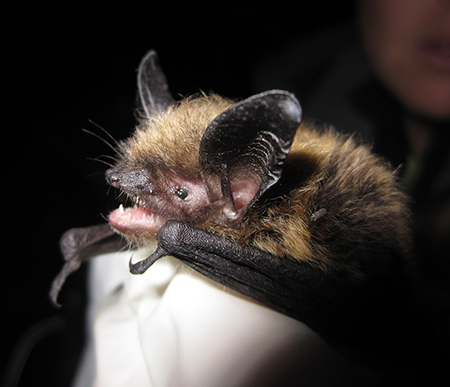
I didn't know we have bats in Alaska!
It's understandable that people are surprised to learn Alaska is home to bats, since many bats species are associated with tropical or warm climates. Bat researchers and biologists hear this - and other misconceptions about bats - and are here to share some insights.
We don’t have bats in Alaska
We do have bats in Alaska - seven different species. The little brown bat (yes, that’s its official name) is the most common and widespread bat in the state (and in North America) and is found from Southeast to as far north as Kotzebue! If you see a bat flitting about on a summer evening in Anchorage or Fairbanks, Kenai or Nome, it’s most likely a little brown bat. Alaska’s other bats are found only in Southeast.
They are California myotis, long-legged myotis, Yuma myotis, the hoary bat, the silver-haired bat and the western long-eared bat. You notice that many of Alaska’s bats have the word myotis in the name. My-otis means “mouse-ears” and is a genus of bats. These northern bat species are pretty closely related.
How does a famously nocturnal animal survive in the Land of the Midnight Sun? They make the most of the short summer nights by catching and eating nearly their body weight in insects every night. They eat mosquitoes, moths, beetles and spiders. And like many other Alaska mammals, they hibernate through the winter.
Bats will hibernate in my house
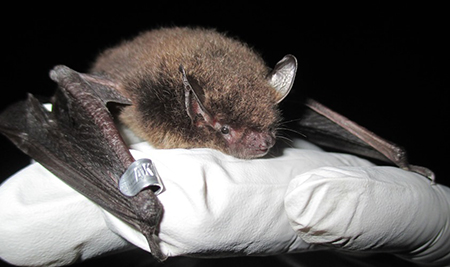
Not likely. In the summertime, female bats may roost in attics during the day, but in winter, they do not want to hibernate in an occupied building because it’s too warm! They need cold temperatures to hibernate and so will likely not stay somewhere that is heated past October.
Homeowners who learn that bats are roosting in their attics in summer sometimes want to keep them out. If the cracks, holes and vents that enable bats to get inside are blocked in the summer the bats - often mothers with young pups - may be trapped inside and die there. It’s best to wait until fall when most (or all) bats have left for hibernation sites. It is safe to exclude bats from buildings in October. Visit Living with Bats for tips on exclusion. Bats are protected by law and it is illegal to just kill them. Little brown bat populations in North America are declining from an invasive fungus causing White Nose Syndrome, which sickens and can kill bats in winter when they are hibernating. It’s important to conserve our Alaskan colonies where we can.
Bats will fly into my hair
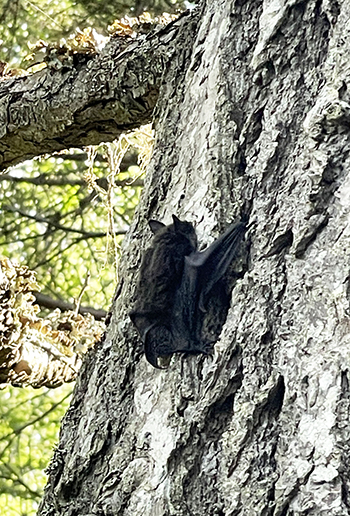
There is a common mistaken fear that bats get tangled up in people’s hair. This is very unlikely. Alaska bats capture their insect prey by “hawking” – swooping, zipping and snatching flying bugs on the wing - which requires agility and skilled maneuverability. It’s possible that a young bat, like a fledgling bird, could be clumsy its first summer and have an accidental collision. But bats don't want to crash into you and are busy minding their own business.
All of Alaska’s bat species are insectivorous (eat insects) and would only get near humans to catch the insects gathered around us or to investigate the new person in their area. They will not intentionally make contact with humans.
Bats always carry rabies
Bats can carry rabies, but fewer than 1% of bats tested in the US have been positive. In more than 50 years of testing in Alaska, only six cases have ever been detected in bats - all in Southeast. No cases have ever been recorded north of that region, and none have ever transmitted rabies to a human. The bats positive for the virus were found either sick or dead and were tested in the state veterinary lab. Rabies in Alaska is most often carried by foxes.
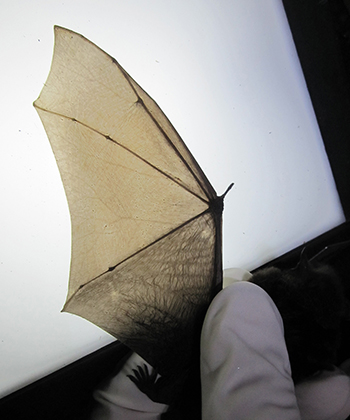
Most cases (nationally) involving rabies and bat transmission to people is due to improper handling - a person picking up an infected sick or dead bat with their bare hands. If you need to handle a bat, wear gloves. Use a tool or a broom. Never handle healthy, sick, or dead bats with your bare hands.
If a person or pet has skin contact with a bat (or a bat was around a nonverbal person who would be unable to say if the bat touched them), contact the Alaska Section of Epidemiology: Mon – Fri 8am – 5 pm: (907) 269-8000, after Hours: (800) 478-0084.
If there are bats in your attic, eaves or siding, somewhere in your home but they cannot access the interior and their guano isn’t causing unpleasant smells, then there are no health risks to them being there.
Bats are blind
All bats can see, but they use echolocation to navigate and hunt in the dark. Being nocturnal (awake at night) provides advantages – there’s not competition from birds chasing insects and fewer predators on the wing.
Bats are rodents
Nope, not rodents, not “flying mice.” The taxonomic order Rodentia is the largest order of mammals in the world, with over 2,000 species. Bats, however, are in an entirely different order all their own, Chiroptera, the second largest order of mammals with over 1,500 species. Bats have been around for at least 52 million years and comprise about 20% of all mammals worldwide. Chiro-ptera means “hand-wing” which fits bats very well, since their “hands” have evolved into functional wings, with their “fingers” serving to stretch and shape the wing membrane. Bats are the only mammals capable of true flight (flying squirrels only glide).
Bats multiply as fast as mice

Despite their appearance, bats differ greatly from mice in that they only have one pup a year. These pups are born in early summer (June to early July) in Alaska and learn to fly in late July. Bats can live up to 40 years (as opposed to the 1-3 year lifespan of most mice, and very unusual for small mammals) and finding a 10-year-old bat or older in Alaska would not be unusual.
Looking out for our bat neighbors
Bats are valuable members of the ecosystem and powerful insectivores. They like to form maternity colonies to have their pups in the spring and can be found in standing dead trees, stumps, rock crevices, and human dwellings like sheds or cabins. Leaving safe dead trees up can give them and other cavity nesting species like chickadees and swallows somewhere to live. Keeping cats indoors can also prevent them from hunting young bats learning to fly and keep cats safe from potential disease exposure (free-roaming cats are also responsible for 3 billion bird deaths in the U.S. every year). When excluding bats from dwellings, erecting bat houses can give them somewhere else to live, though their occupancy of these houses can be variable (they do not seem to use them at all in Southeast).
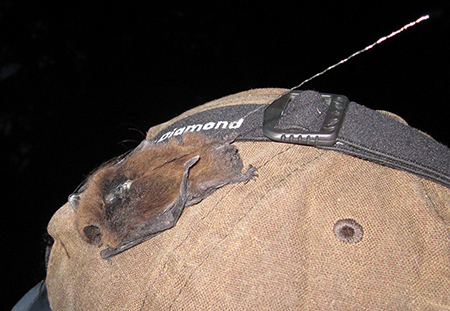
If you see a bat in Alaska, please report it to help ADF&G track bat presence and behavior in the state.
Jesika Reimer and Riley Woodford contributed to this mythbuster.
Species profiles for little brown, silver haired, and long-eared bats
2023 update on bats and rabies in Alaska
Boxes for bats - refuges for roosting
The incredible bat-detecting dog AFWN article from 2021
Subscribe to be notified about new issues
Receive a monthly notice about new issues and articles.
